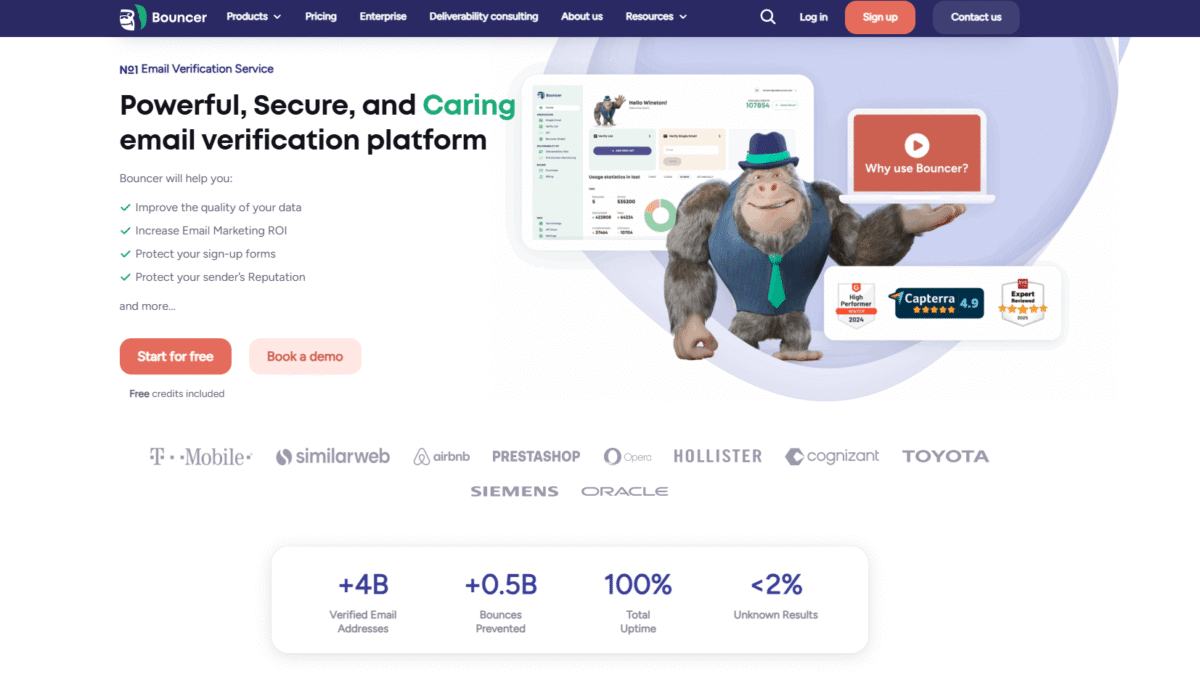
Boost Deliverability: How to Check Email Domain Reputation
Maintaining a clean sender reputation is essential if you want your emails to land in the inbox instead of the spam folder. To check email domain reputation effectively, you need the right tools and best practices. In this guide, you’ll learn how to evaluate your domain’s trustworthiness, monitor key metrics, and take action to boost deliverability—plus discover how Bouncer can simplify the entire process.
Why Email Domain Reputation Matters
Your domain reputation is a numerical score that mailbox providers assign based on your email sending history and engagement. A positive reputation means higher open rates, better click-through rates, and fewer bounces. A poor reputation can lead to blacklisting, placement in spam folders, or outright blocking.
- Inbox placement: Good reputation ensures your messages reach subscribers’ primary inboxes.
- Deliverability: ISPs use your domain score to decide whether to accept or reject your emails.
- Brand trust: Recipients are more likely to engage with emails from a recognized, reputable domain.
How to Check Email Domain Reputation
Monitoring your domain’s health involves checking multiple data points. Here are the top methods to check email domain reputation:
1. Google Postmaster Tools
- Create and verify your domain in Postmaster Tools.
- Review metrics like Spam Rate, IP Reputation, and Domain Reputation.
- Analyze feedback loops to identify deliverability issues early.
2. Microsoft SNDS (Smart Network Data Services)
- Register your IP addresses to access similar insights for Outlook and Hotmail recipients.
- Monitor complaint rates and spam trap hits.
- Receive alerts if your IP is flagged for poor sending practices.
3. Third-Party Blacklist Checkers
- Use services like MXToolbox or Talos Intelligence to query major blocklists.
- Enter your domain or IP to see if you’re listed.
- Follow the removal procedures for any blacklists you appear on.
4. Email Deliverability Platforms
Platforms like Bouncer provide an all-in-one solution. With the Deliverability Kit, you can:
- Test your inbox placement across major providers.
- Verify SPF, DKIM, and DMARC configurations.
- Scan IPs/domains against blocklists automatically.
Ready to simplify domain reputation monitoring? Get Started with UseBouncer for Free Today and gain full visibility into your sending health.
Key Metrics to Track
When you check email domain reputation, focus on these indicators:
- Spam Complaint Rate: Percentage of recipients marking your mail as spam.
- Bounce Rate: Hard bounces can damage your domain score quickly.
- Authentication Pass Rates: SPF, DKIM, and DMARC failures raise red flags.
- Engagement: High open and click rates signal to ISPs that recipients value your emails.
- Blacklist Status: Appearances on blocklists often lead to widespread delivery problems.
Steps to Improve Your Domain Reputation
1. Authenticate Your Domain
Set up SPF, DKIM, and DMARC records to prove your emails are legitimate. Misconfigurations here can cause ISPs to distrust your messages.
2. Clean Your Lists Regularly
Remove invalid, inactive, or toxic addresses. Use Bouncer’s email verification to reduce bounce rates and spam complaints before sending campaigns.
3. Segment and Personalize
Send targeted content to engaged subscribers. Better engagement means fewer unsubscribes and complaints, positively impacting your reputation.
4. Monitor Feedback Loops
Subscribe to ISP feedback loops. When a recipient complains, remove them from your list automatically to prevent repeated complaints.
5. Warm Up New IPs and Domains
Gradually increase your sending volume when starting with a fresh IP to build trust with mailbox providers.
How Bouncer Helps You Stay Ahead
Bouncer is designed to streamline every aspect of reputation management:
- Deliverability Kit: Automated inbox placement tests and authentication checks.
- Toxicity Check: Identify spam traps, complainers, and breached emails on a 0–5 scale.
- Shield: Real-time form validations block malicious sign-ups before they hit your database.
- Integrations: Connect with popular ESPs to verify lists seamlessly.
Best Practices for Ongoing Monitoring
- Schedule weekly reputation checks across all tools.
- Set up alerts for sudden spikes in bounce or complaint rates.
- Review ISP dashboards monthly to catch early warning signs.
- Document changes to authentication records and monitor their impact.
Conclusion
Knowing how to check email domain reputation is a critical skill for any email marketer. By leveraging industry tools, following best practices, and using Bouncer’s powerful Deliverability Kit and verification features, you can protect your sender score and maximize ROI. Ready to take control of your deliverability? Get Started with UseBouncer for Free Today and watch your inbox placement soar.
